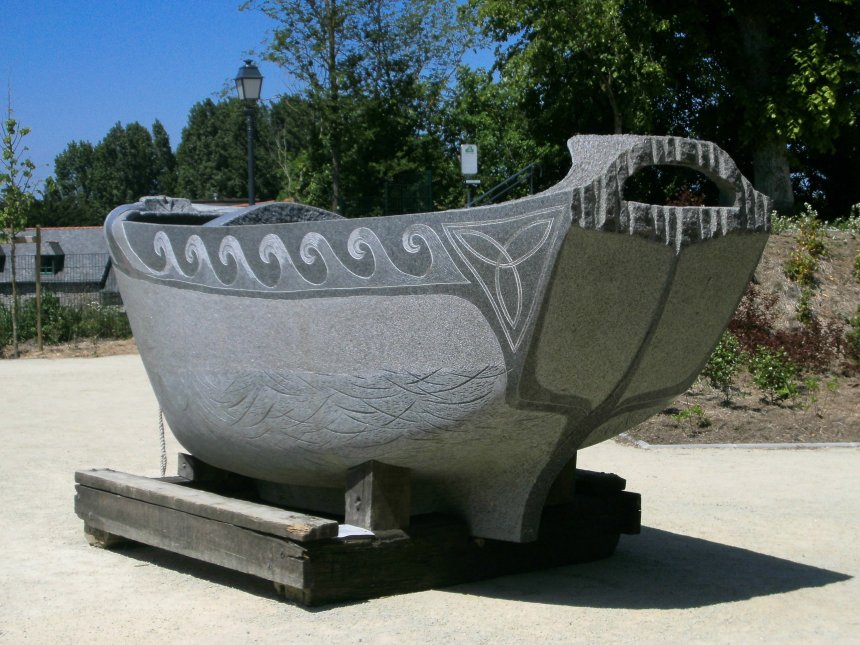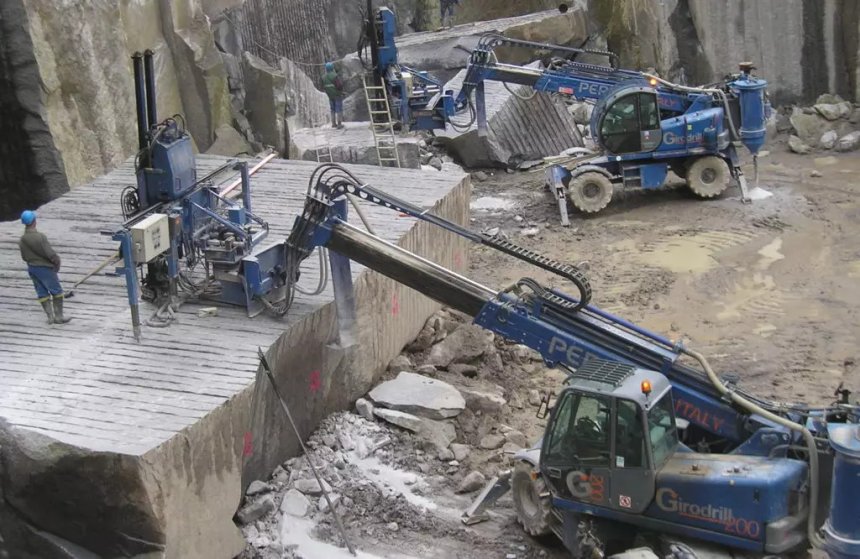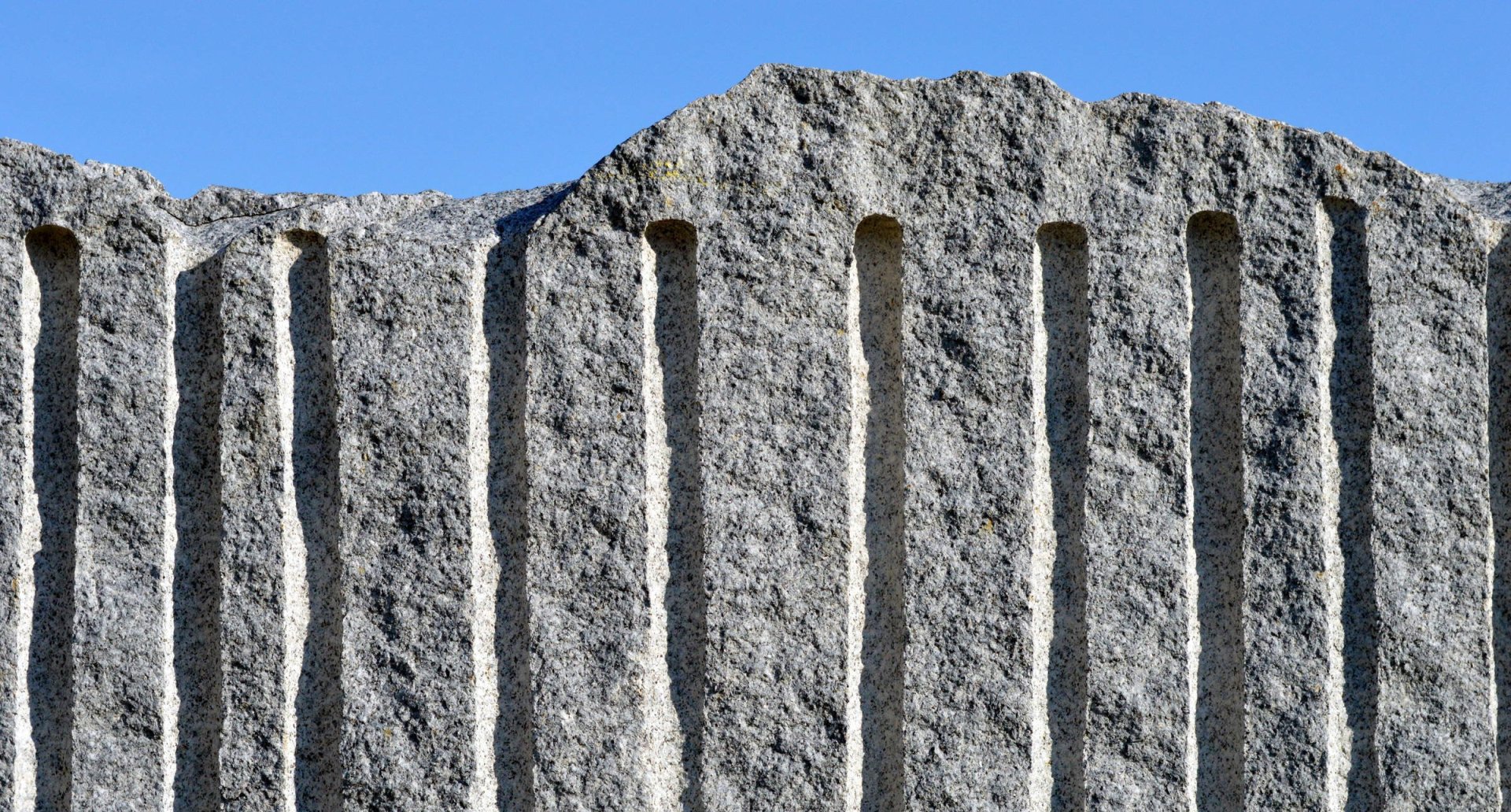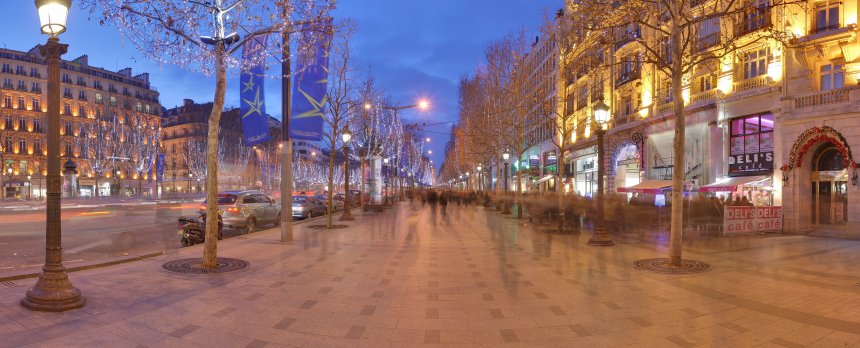Stone : biotite-bearing granodiorite
Type : plutonic magmatic rock
Age : between 540 and 520 million years
Quarry : Bécanne, Lanhélin (Ille-et-Vilaine)
What Is a Granodiorite?
Geologists classify plutonic igneous rocks based on their quartz and feldspar content. The Lanhélin granodiorite contains 44% plagioclase feldspars (predominant), 26% quartz, as well as black micas (biotite) and other potassium-rich feldspars. Granodiorite differs from granite mainly by its higher proportion of plagioclase feldspar.
On the Champs-Élysées...
This rock is marketed under the name “Bleu de Lanhélin.” It is mainly used for roadworks, construction, funerary art, and sculpture. In Paris, it’s used for paving stones and curb stones on the sidewalks of the Champs-Élysées. It is also exported to many regions in France and internationally.
Precision Metrology
This rock possesses highly desirable physical characteristics—stability, hardness, durability, etc. It is used to manufacture extremely flat surfaces with a precision of 3 to 10 micrometers (about the thickness of a very fine hair). These “precision marbles” are used in the automotive, aerospace, and space industries, as well as in research centers. The Lanhélin quarry can provide 10-meter monoliths for use in large precision measurement benches.

Always Tiny Holes
The straight, cylindrical semi-grooves visible on the vertical faces of the “sandwich” block reveal the cutting technique used to extract it from the quarry wall without causing cracks. Quarry workers drill holes around the perimeter of the block, then use metal wedges or expansive powder inserted into the drill holes to delicately split the rock.


